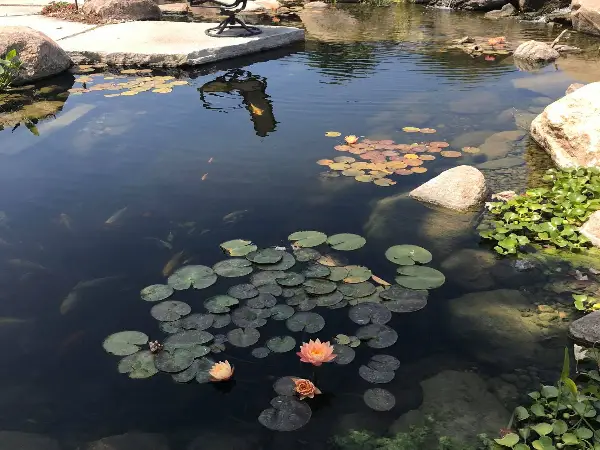How to Clear Pond Water
Ponds are a beautiful addition to any outdoor space, but keeping the water clear and clean can be a challenge. Murky and cloudy water can detract from the visual appeal of your pond and can also indicate poor water quality. Fortunately, there are several effective methods for clearing pond water and maintaining a healthy aquatic environment. In this comprehensive guide, we will explore various techniques and strategies for achieving crystal-clear pond water.
Understanding the Causes of Cloudy Pond Water
Before delving into the solutions for clearing pond water, it’s important to understand the potential causes of cloudy or murky water. Common culprits include algae growth, sediment accumulation, excess nutrients, and imbalanced pH levels. Algae thrive in nutrient-rich water and can quickly multiply, leading to green or brown discoloration. Sediment buildup from organic debris and fish waste can also cloud the water, while imbalanced pH levels can disrupt the natural ecosystem of the pond.
Effective Strategies for Clearing Pond Water
1. Install a Pond Filtration System
One of the most effective ways to clear pond water is by installing a high-quality filtration system. A pond filter helps remove debris, excess nutrients, and particulate matter from the water, resulting in improved clarity. There are several types of pond filters available, including mechanical, biological, and UV filters. Mechanical filters trap solid waste, while biological filters promote the growth of beneficial bacteria that help break down organic matter. UV filters use ultraviolet light to control algae growth, reducing the likelihood of green water.
2. Use Beneficial Bacteria
Beneficial bacteria play a crucial role in maintaining a balanced and healthy pond ecosystem. These naturally occurring microorganisms help break down organic waste and excess nutrients, leading to clearer water. Adding beneficial bacteria products to the pond can help accelerate the decomposition of organic matter, reducing the likelihood of algae blooms and murky water. Look for bacterial treatments specifically designed for pond use, and follow the manufacturer’s instructions for best results.
3. Implement Aeration
Aeration is essential for promoting oxygen levels in the pond and preventing stagnant water, which can contribute to cloudy conditions. Aeration devices such as air pumps, fountains, or waterfalls help circulate the water and create movement, reducing the likelihood of sediment settling at the bottom of the pond. Increased oxygen levels also support the growth of beneficial bacteria, which in turn contributes to clearer water. Consider incorporating aeration into your pond design to maintain optimal water quality.
4. Perform Regular Water Testing
Regular water testing is a critical aspect of pond maintenance, as it allows you to monitor key parameters such as pH, ammonia levels, and nutrient concentrations. Testing kits are readily available and provide valuable insights into the overall health of the pond. By identifying imbalances or issues early on, you can take proactive measures to address them and prevent water quality issues from worsening. Aim to test the water at regular intervals and make adjustments as needed to maintain a clear and balanced aquatic environment.
5. Control Excess Nutrients
Excess nutrients, particularly nitrates and phosphates, can fuel the growth of algae and contribute to cloudy water. To mitigate nutrient buildup, consider incorporating aquatic plants into the pond. Plants such as water lilies, duckweed, and water hyacinths help absorb nutrients and compete with algae for resources, ultimately promoting clearer water. Additionally, maintaining a healthy fish population and avoiding overfeeding can help minimize nutrient input into the pond, supporting improved water clarity.
6. Perform Regular Maintenance
Routine maintenance tasks are essential for preventing and addressing cloudy pond water. Remove debris such as leaves, twigs, and excess vegetation from the surface of the water to prevent organic matter from decomposing and contributing to water discoloration. Consider using a skimmer or net to skim the water’s surface and remove floating debris. Periodically clean the pond filter to ensure optimal performance, and inspect the pump and aeration equipment for any signs of blockages or malfunctions.
7. Consider Chemical Treatments
In some cases, chemical treatments may be necessary to address persistent algae blooms or water discoloration. Algaecides and water clarifiers can help control algae growth and improve water clarity when used according to the manufacturer’s guidelines. It’s important to exercise caution when using chemical treatments and to carefully follow dosage instructions to avoid harming aquatic life. Additionally, consider natural or eco-friendly alternatives to traditional chemical treatments to minimize environmental impact.
Maintaining Clear Pond Water for Long-Term Success
Achieving and maintaining clear pond water requires ongoing attention and proactive maintenance efforts. By combining the aforementioned strategies and staying vigilant in monitoring water quality, you can create a healthy and visually appealing aquatic environment. Regular observation of the pond, adherence to maintenance routines, and a holistic approach to water quality management are key factors in long-term success.
In conclusion, maintaining clear pond water is achievable through a combination of effective filtration, beneficial bacteria, aeration, nutrient control, regular maintenance, and, when necessary, targeted chemical treatments. By understanding the underlying causes of cloudy water and implementing appropriate solutions, you can enjoy the beauty of a pristine pond while supporting the overall health of the aquatic ecosystem. With dedication and the right approach, you can transform a cloudy pond into a vibrant and inviting focal point in your outdoor space.





